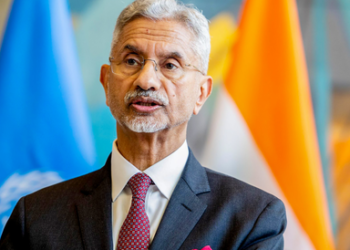A decentralized Twitter could take years to emerge and might look much the same as it does today.
In 2008, the handful of employees working for Twitter reached an impasse. Some were focused on preparing for a surge of new users to their social media platform. But one developer argued for another approach: Their platform, he said, shouldn’t be a platform at all. Instead, Blaine Cook envisioned Twitter as a backbone for online chatter, one that would allow its users to freely exchange messages with people on other social media platforms instead of locking them into conversations among themselves. He hacked together a prototype to demonstrate his idea. But the other Twitter employees dismissed it, and Cook was eventually pushed out of the start-up. Twitter remained a tightly controlled island on the internet and eventually drew in hundreds of millions of users.
Now, over a decade later, Twitter is reversing course. The company is pursuing the sort of decentralization Cook championed. It is funding an independent effort to build a so-called open protocol for social media. It is also weaving cryptocurrency into its app, and opening up to developers who want to build custom features for Twitter. Its newly appointed chief executive, Parag Agrawal, has championed decentralization inside the company, hiring cryptocurrency developers and prioritizing related projects. Twitter executives now believe that decentralizing the social media service will radically shift online power, moving it into the hands of users, and pose a fundamental challenge to the walled gardens of companies like Facebook.
A decentralized Twitter could take years to emerge and might look much the same as it does today. But it could allow users to set moderation rules for their own communities and ease the pressure Twitter faces from lawmakers over how it moderates content. It might also open new revenue streams for the company. “If Bitcoin existed before Twitter existed, I think we’d see very different revenue models,” Jack Dorsey, a company co-founder who stepped down as chief executive said in a recent Twitter audio chat. “We wouldn’t be so dependent on ad revenue models.” But the changes raise questions about how Twitter can reach its goal of doubling revenue over the next two years, even as it cedes some control over the currency by which social media companies are valued — users and their data. Twitter also faces some doubts from the communities it hopes to unite: slighted developers, web3 acolytes and enthusiasts for open-source software. The impulse to build decentralized systems is rooted in the foundation of the internet, with open protocols like the one Cook envisioned for Twitter at the heart of everyday technologies like email. Twitter is looking back at how the company started and how it strayed, and it is trying to tap into that old idealism for a new kind of business. Dorsey said he was drawn to decentralized technologies like Bitcoin because they reminded him of the ethos of the early internet. “It had the same sort of energy, it had the weirdness, it had the punk aspect of it,” Dorsey said. Cook, who is now an engineer at Condé Nast, said, “It was obvious that we could decentralize Twitter.” The Bluesky project would eventually allow for the creation of new curation algorithms, which would show tweets at the top of users’ timelines that differed from what Twitter’s own algorithm showed. It would give users more choice about the kinds of content they saw, Dorsey said, and could allow Twitter to interoperate with other social media services.
Science






















